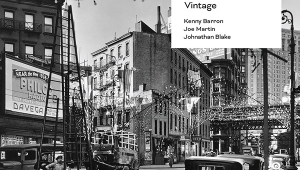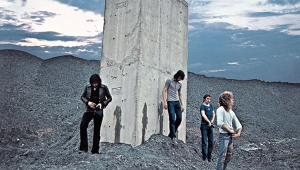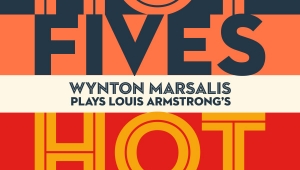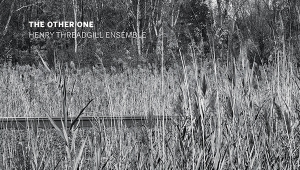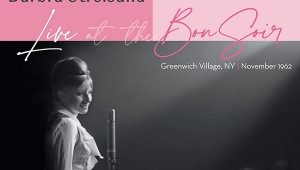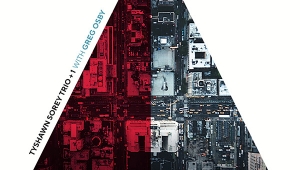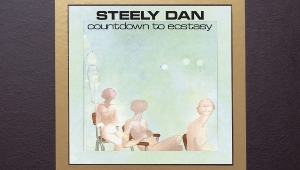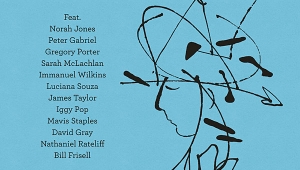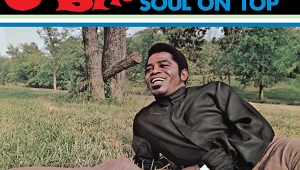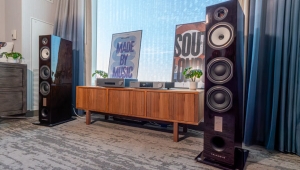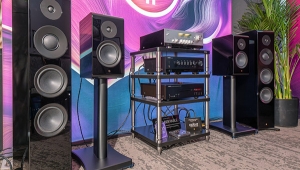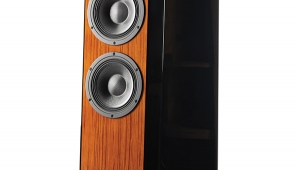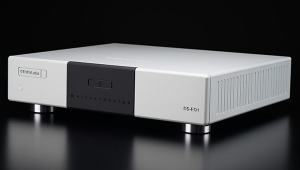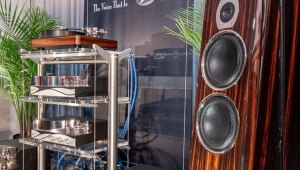| Columns Retired Columns & Blogs |
Recording of August 2023: Byrd: Mass for five voices; Choral works

Byrd: Mass for five voices; Choral works
The Gesualdo Six/Owain Park
Hyperion CDA68416 (CD, 2023). Adrian Peacock, prod.; David Hinitt, eng.
Performance *****
Sonics *****
The Gesualdo Six/Owain Park
Hyperion CDA68416 (CD, 2023). Adrian Peacock, prod.; David Hinitt, eng.
Performance *****
Sonics *****
Those who, like me, hauled ourselves through college music courses will remember being told that the Byrd Mass for five voices is a masterpiece, a claim soon belied when we were played a performance by some desiccated, monochromatic chorus. Had a recording like the new one by The Gesualdo Six been played instead, we might have agreed more readily with the academic judgment.
Simply by singing firmly and attending to the texts, these six male singers transform the Mass, here interspersed with a selection of appropriate choral antiphons, into vibrant, communicative scores. They accomplish this without violating today's norms of Renaissance style.
The use of just one voice on a part, which harks back to Joshua Rifkin's pioneering practice in Bach choral works, could sound threadbare or even counterproductively economical. Not here, though: These singers' solidly grounded voicings and impeccable intonation produce a full-bodied, organlike richness at the start of the Credo—a vital rendition, by the way, which eschews the conventional, dissociated "laundry list" approach—and amplify the power of the counterpoint in Tristitia et anxietas. Where two or more voices move together, as in the Ave Maria, the coordination is perfect. Throughout the program, precise tuning makes for especially satisfying final cadences. Only the countertenor's occasionally wan, flutey pianos disappoint. At full volume, he matches everyone else.
In his note, Owain Park, the group's founder-director, emphasizes urgency and directness of communication; here, that's reflected in a singular attention to the meaning of the texts. (It's easy to take them for granted when "the Ordinary of the Mass" is spoken or sung unchanged every week.) The group projects a number of passages with an appropriately reflective restraint. In the Gloria, "Domine Deus, Agnus Dei" becomes pensive; the second part of Tristitia et anxietas inhabits a consoling mood. In the Credo, the hush at "Qui propter nos homines" contemplates the entire mystery of the Incarnation, not just of the Nativity itself. (Note that Byrd reserves homophony to highlight, not "Et homo factus est," but "passus"—not the birth but the death.) In Emendemus in melius, "Quia peccavimus tibi" ("Because we have sinned against You") is suitably humble.
Such restraint allows the affirmative moments to register all the more strongly. The Credo's "Et in unam sanctam catholicam"—the line Beethoven chose to bury in the Missa solemnis—is quite assertive, and the Agnus Dei's third invocation is unusually assured within the prevailing reverence. For the Lamentations of Jeremiah, where Park has supplied a conjectural tenor part, the forthright opening suggests a polyphonic call to attention. Conversely, the quiet "Jerusalem, Jerusalem" at the finish is bleached of fullness; it's a terrific contrast.
"[I]n preparing this music for record," Park wrote in his liner note, "we found ourselves wanting to take the music off the page, released from the baggage of its creation, and to enjoy the full expressive potential of the writing." They succeeded. I don't know whether any of these singers are religious, but dramatically, they get these texts.
The singers even manipulate their timbres for special effects. At the program's start, a profusion of brighter vowels are intoned with a slightly reedy edge, leading me to think for a moment that I was hearing an instrumental accompaniment. So did the solo note that began the Benedictus. Only the motet Afflicti pro peccatis nostris actually requires all six singers, but the regroupings between and within numbers allow them further opportunity to take advantage of varied "choirs" and registers. (In the Mass, the personnel remain consistent, without changes: Park directs, and the other five sing throughout.)
Some odds and ends: Park has moved Tristitia et anxietas down to E-flat minor—a key that didn't exist in Byrd's day, pre-tempered tuning—apparently out of sheer choice. The musicologists may well frown, but the move serves to foster a rich, organ-like sonority. The Gloria and Credo of the Mass are prefaced by the expected chant incipits, though that for the Gloria isn't the familiar one. The Latin pronunciation is mostly Church standard, but "Agnus" gets a hard "g," while the soft "c" ("benedicimus," "circumdederunt") becomes "s," neither Roman nor Viennese.
You could nitpick it, but don't. Just fall in love with the music.
Recording at All Hallows' Gospel Oak—an Anglican church in north London and the site of hundreds of commercial sessions, including previous recordings by The Gesualdo Six—Hyperion (in the person of recording engineer David Hinitt) supplies an outstanding sonic frame. The company's familiar ambience—which in the past has sometimes called attention to itself—here conjures a gentle, churchly atmosphere without blunting any detail. Bravi to all.—Stephen Francis Vasta
- Log in or register to post comments



